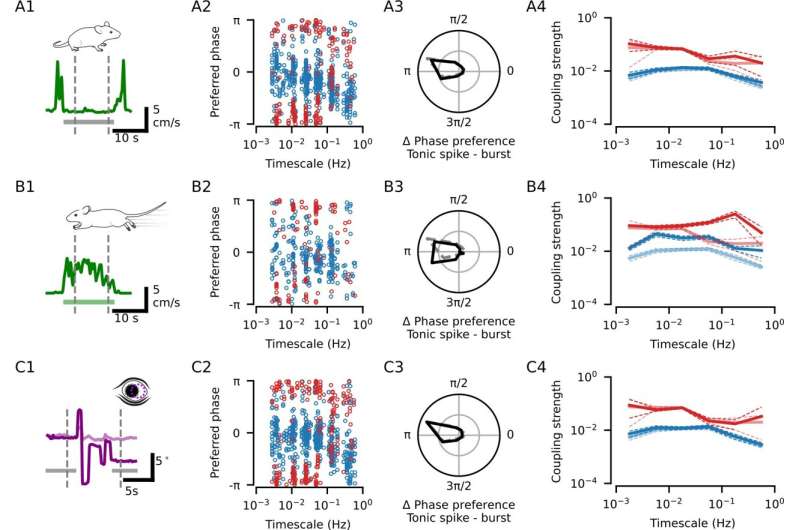This article has been reviewed according to Science X's editorial process and policies. Editors have highlighted the following attributes while ensuring the content's credibility:
fact-checked
peer-reviewed publication
trusted source
proofread
Study reveals that the brain modulates visual signals according to internal states

What we see is not simply just a neural representation of the pattern of light in the eye, but an interpretation of this image, to which our needs and expectations contribute. These factors are shaped by earlier experiences and also depend on inner states like our behavioral activity and our vigilance or attentiveness—often collectively known as "arousal."
In a new study recently published in the journal PLOS Biology, researchers from LMU, the University of Freiburg, and the Bernstein Center for Computational Neuroscience analyzed neural activity in the visual thalamus.
This is an area of the brain that receives visual signals directly from the eye via the optic nerve before processing them and passing them on. More specifically, they investigated the thalamic dorsal lateral geniculate nucleus (dLGN), the primary interface for visual signals from the retina to the visual cortex.
"It's long been known that the neurons of the dLGN, like the neurons in other thalamic nuclei, exhibit conspicuous patterns of activity that are related to arousal," explains LMU Professor Laura Busse, lead investigator of the study and soon to be principal investigator in the SyNergy Cluster of Excellence.
Two state-dependent firing modes have been described in particular: burst firing, which tends to occur during states of low arousal and behavioral inactivity; and tonic firing, which is observed during states of vigilance.
"This led to the hypothesis that thalamic nuclei use burst and tonic firing modes to dynamically control or modify the information flow to and between cortical areas according to the state of arousal of the animal."
However, this proposition has not yet been experimentally tested. "The neural mechanisms by which arousal influences the processing of visual information remain largely unexplained."
In the new study, Busse's team directly compared the activity measured in the thalamus with the degree of arousal. "Arousal is reflected in the pupil diameter of mammals, with larger pupils indicating an aroused state," explains the neurobiologist.
In this way, we can make inferences about the state of arousal of an animal from changes in the size of their pupils. The coupled investigation of thalamic and pupil activity helped Busse's team obtain a clear perspective on the connection between thalamic activity and degree of arousal.
"We discovered that during certain phases of pupil dilation and constriction, different patterns of neural activation occur," says Professor Christian Leibold from the University of Freiburg and the Bernstein Center for Computational Neuroscience, one of the senior authors of the study.
"The electrical activity in the visual thalamus is coupled with the pupil dynamics over timeframes ranging from seconds to several minutes." This modulation of neural activity patterns during arousal was robust: It did not depend on other factors, such as what the animal saw or whether it was moving, sitting still, or moving its eyes.
"Our research therefore shows that fundamental visual information is transmitted with differential encoding to 'higher' areas of the brain like the visual cortex in different phases of arousal," says neurobiologist Busse. This supplies a first mechanistic explanation for how visual perception can be influenced by changes in the state of arousal.
"Our results support the hypothesis that arousal-dependent modulation is not a singular process, but probably an interplay of changes taking place over various timescales."
More information: Davide Crombie et al, Spiking activity in the visual thalamus is coupled to pupil dynamics across temporal scales, PLOS Biology (2024). DOI: 10.1371/journal.pbio.3002614



















